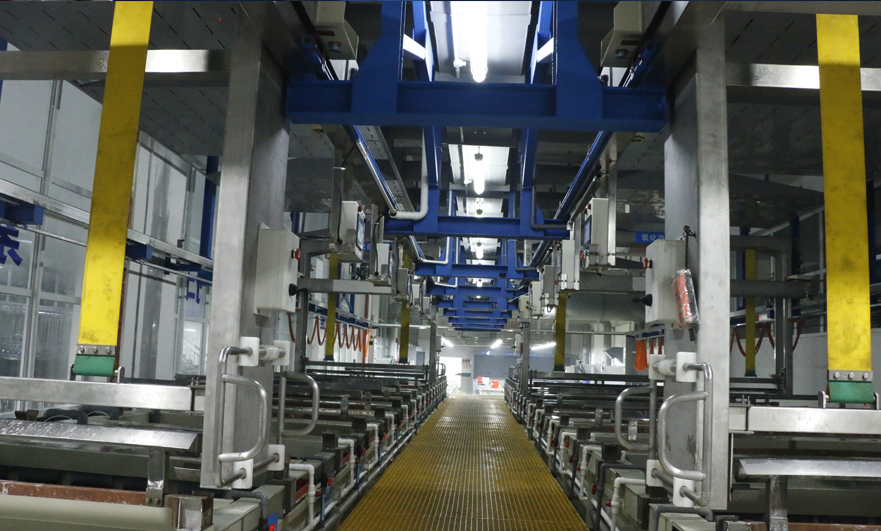15 years one-stop China custom CNC machining parts factory

Hey there I’m VMT Sam!
With 25 years of CNC machining experience we are committed to helping clients overcome 10000 complex part-processing challenges all to contribute to a better life through intelligent manufacturing. Contact us now
 209 |
Published by VMT at Nov 17 2021
209 |
Published by VMT at Nov 17 2021
Surface treatment plays the role of increasing the beauty of CNC machined parts and improving performance, and galvanizing is one of the methods of surface treatment. A layer of zinc is plated on the surface of metal, alloy or other materials, which plays the role of beauty and rust prevention.When choosing zinc plating, we often hear white zinc plating, blue zinc plating, color zinc plating, black zinc plating, and what is the difference between galvanizing? How to distinguish? Below we take you to understand the difference between white zinc plating, blue zinc plating, color zinc plating and black zinc plating.
Galvanized color
In fact, the color of zinc plating is the effect of passivation, which is to perform one treatment in a chromate solution to obtain a passivation film of different colors. The structure is generally considered to be composed of basic chromium chromate, basic zinc chromate, and chromium. A complex mixture of chromium acid, zinc chromate, and oxides of zinc and chromium. The passivation treatment of the galvanized layer into rainbow colors can greatly improve the corrosion resistance of the surface of the CNC machined parts. Mainly used for the protection of steel parts.
Their difference
1. Color
The so-called white zinc plating is the silver-white passivation film formed after the passivation of the zinc plating.
Blue zinc plating is a passivation of zinc plating to form a blue-white or blue passivation film.
The color zinc plating is determined by the passivation process, generally from yellow, red, blue to green, until it shows the color of the film itself. If the thickness of the film is not uniform, it will produce iridescent or variegated colors.
Black-plated zinc-plated passivation has the effect of forming a black passivation film.
The effect of the military green passivation film formed by the military green zinc plating passivation.

2. The difference in corrosion resistance
Army green passivation>black passivation>color passivation>blue-white passivation>white passivation.
3. Process difference
White zinc electroplating: Zinc is not easy to change in dry air, and it can produce a basic zinc carbonate film in a humid environment. This film can protect the internal CNC machining parts from corrosion.
Blue zinc plating: It is a low-value anti-corrosion electroplating layer, which is widely used to protect steel parts, especially to prevent atmospheric corrosion.
Color zinc electroplating: using chemical or electrochemical methods to produce a colored film or interference film on the surface of CNC machined parts. The film is very thin, and sometimes the interference film itself has almost no color, and when the metal and the surface of the film reflect light At that time, the light waves are canceling each other, forming a variety of different colors.
Black zinc plating: Black zinc plating is a method of electroplating on the surface of iron CNC machined parts to produce a zinc layer. The activity of zinc is higher than that of iron. The acid in the air will react with zinc first to protect the iron. , After the passivation of chromate, a black passivation layer is produced, which strengthens the protective effect of electro-galvanized.
Army green zinc plating: One is the five acid type containing chromic anhydride, and the other is the five acid modified passivation film containing potassium dichromate to increase the surface corrosion resistance of CNC machined parts. But the passivation solution contains six Valence chromium causes serious harm to people and the environment. In addition, since the passivation film is easily scratched before aging, it is not suitable for passivation of sheet-shaped CNC machining parts.
4. The difference in thickness
The color depth of the zinc-plated passivation film is also related to the thickness of the film. The thickness of the film is related to the passivation time or the length of the residence time in the air. In low chromium and ultra-low chromium passivation solutions, the passivation film is formed in the solution. The passivation time is long, the film layer is thick, the passivation time is short, and the film layer is thin.
Summarize
Galvanizing adopts different passivation processes to obtain various color passivation films, which improves the decorativeness of CNC machined parts. For the above commonly used passivation films of different colors, there is a big difference in the corrosion resistance of CNC machined parts. Therefore, people should comprehensively consider the environmental conditions and appearance decoration of the CNC machined parts to determine the appropriate passivation process when performing galvanizing passivation.
Ready To Start Your Next Project?
Get Instant Quote

Request a Free Quote
Send us a message if you have any questions or request a quote. We will get back to you ASAP!